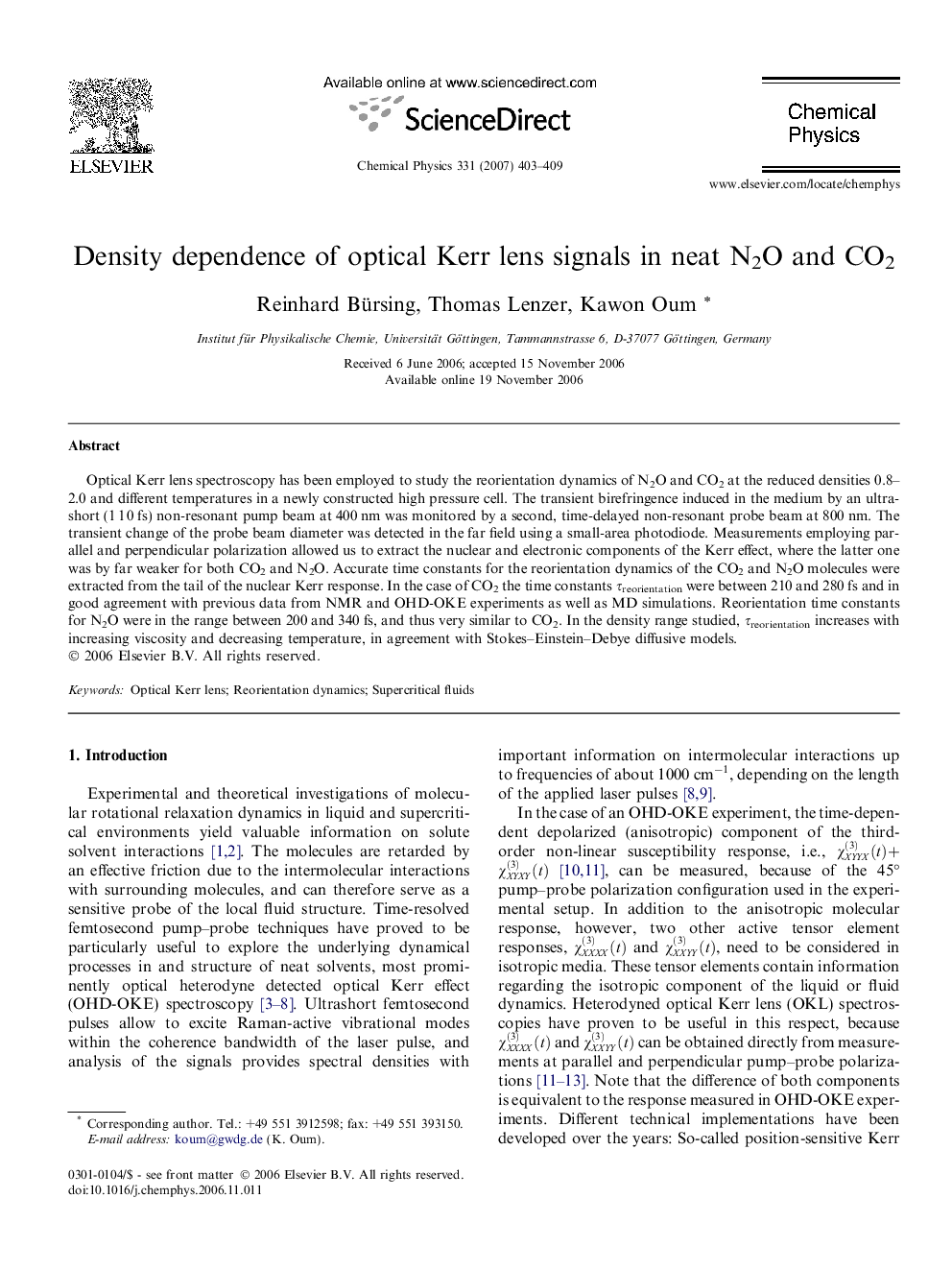| Article ID | Journal | Published Year | Pages | File Type |
|---|---|---|---|---|
| 5376580 | Chemical Physics | 2007 | 7 Pages |
Abstract
Optical Kerr lens spectroscopy has been employed to study the reorientation dynamics of N2O and CO2 at the reduced densities 0.8-2.0 and different temperatures in a newly constructed high pressure cell. The transient birefringence induced in the medium by an ultrashort (1Â 1Â 0Â fs) non-resonant pump beam at 400Â nm was monitored by a second, time-delayed non-resonant probe beam at 800Â nm. The transient change of the probe beam diameter was detected in the far field using a small-area photodiode. Measurements employing parallel and perpendicular polarization allowed us to extract the nuclear and electronic components of the Kerr effect, where the latter one was by far weaker for both CO2 and N2O. Accurate time constants for the reorientation dynamics of the CO2 and N2O molecules were extracted from the tail of the nuclear Kerr response. In the case of CO2 the time constants Ïreorientation were between 210 and 280Â fs and in good agreement with previous data from NMR and OHD-OKE experiments as well as MD simulations. Reorientation time constants for N2O were in the range between 200 and 340Â fs, and thus very similar to CO2. In the density range studied, Ïreorientation increases with increasing viscosity and decreasing temperature, in agreement with Stokes-Einstein-Debye diffusive models.
Keywords
Related Topics
Physical Sciences and Engineering
Chemistry
Physical and Theoretical Chemistry
Authors
Reinhard Bürsing, Thomas Lenzer, Kawon Oum,
